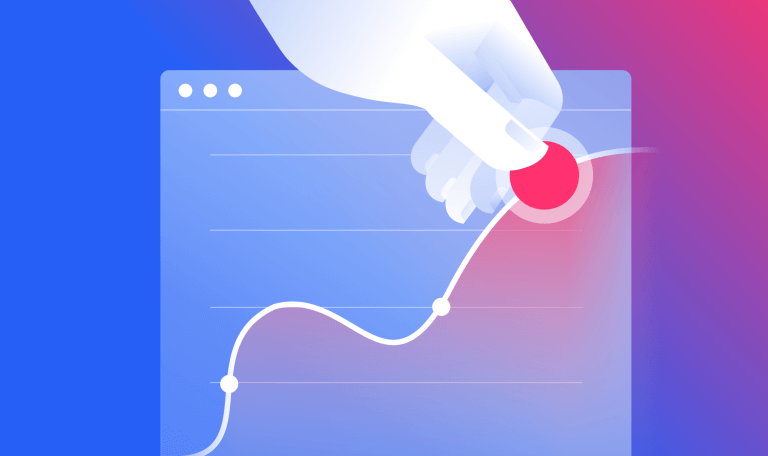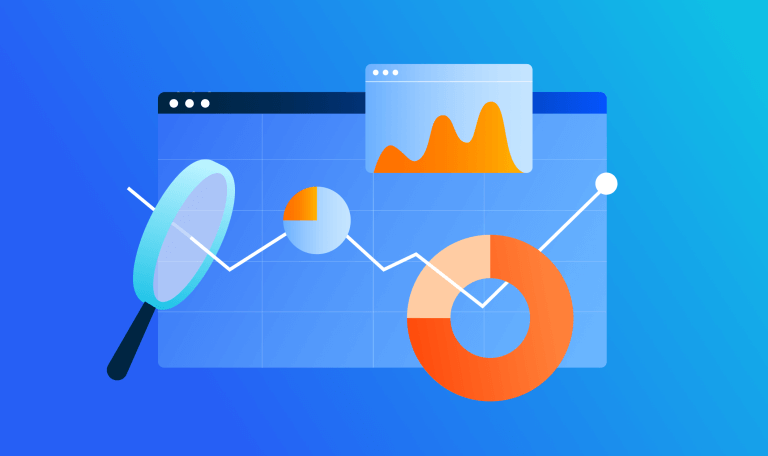Target Market: What It Is and How to Define Yours in 2024

Apparently, some people can sell ice to an Eskimo. If your company doesn’t employ salespeople with superhuman selling powers, however, it’s critical to cater your product or service, as well as your marketing efforts, to the specific target market most likely to purchase it.
What is a target market?
A target market is a distinct customer group with shared characteristics such as demographics, income, lifestyles, or behaviors and is a subset of the total market for a product or service. It is regarded as the most likely potential customer for a business, maximizing the profitability and success of its marketing efforts.
In other words, your target market is a niche group of people who are most likely to buy your product — be it to satisfy a need or solve a pain point. When conducting your market research, you should be laser-focused on reaching and attracting that group because they’re just waiting to discover you.
If targeted correctly, they’ll become your biggest fans, be devoted enthusiasts of your products, and invite all their friends to your profit party, with increased market share as the VIP guest.
That’s why you must define your target market, clearly understand it, and create a business plan to attract your ideal potential customer. You can start with broad categories like location and age groups, but the more granular you get with the help of digital intelligence, the more you can boost your conversion rates.
Your target market strategy will include adapting your product lines, packaging, and distribution channels to win your fans’ approval or optimizing your marketing strategy and messaging to speak their language.
To learn more about utilizing Similarweb Digital Data to define and win your target market, click below.
Target market example: Anti-aging face cream
Here’s a target market example. If you were to sell anti-aging face cream, you’d likely not succeed in selling it to many consumers under thirty, right? Some skin-conscious shoppers might start worrying about their wrinkles in their twenties, and they may even buy your product, but your biggest devotees, that sweet spot of solidarity, will come from that group above thirty-five.
Your primary target market will be the consumers to whom you are catering your product and marketing resources, in this case, clientele over thirty-five. Your secondary target market will be niche pockets of clientele, for example, people with certain skin disorders, dry skin, or sun-damaged skin who want to revive their appearance.
But let’s not guess. Let’s delve into Similarweb Digital Data based on real-user digital signals inside Amazon. Here’s some of what you can learn about the Wrinkle & Anti-Aging Devises category with a few clicks on your keyboard:
- Over 63% of the consumers visiting the category are above 35 years of age
- Almost 80% of them are female
- More than 75% work full-time, and most have an annual income of $50K – $100K
- The vast majority are college-educated (83.5%)
- 47% live in a two-person household
Shopper insights, Wrinkle & Anti-Aging Devises category on Amazon, Dec 2022 – Nov 2023
Whether launching a new product for anti-aging face cream or trying to grow its existing market share, you’ll have to understand and consider your target market.
The more you know about your potential customers, the more you can cater to them. A famous TikTok teen might look great on the packaging but won’t feel relatable or might even be offputting to your more mature customers, and a glass jar will probably feel more credible than a squeezy tube. You might even decide to create two separate products, each appealing to different target markets.
When marketing your skin-reviving cream, there will be specific keywords that appeal to your group of fans, language that resonates with who they are, and places where they like to shop, be it online or at brick-and-mortar stores. These factors must be considered, and defining your target market is vital to that data-driven decision-making process.
The five main target segments
When conducting your target market analysis, you’ll want to divide your audience into distinct market segments to be more effective in reaching and engaging it. Don’t worry about getting too specific. Consumers outside your chosen scope can and will still buy your products. No one is stopping them from joining your fan club. They just won’t be the primary focus of your marketing campaigns.
You can examine many market segmentations, but they mostly fall under 5 main categories.
- Demographic — This segment includes the fundamental traits identifying your target audience. Every potential customer falls into a specific age group, generation, income level, gender, and education level.
- Geographic — With the ever-increasing impact of globalization and streamlined shipping processes, this segment has become more critical to consider, as regional trends will affect your conversion rates.
- Firmographic — Suitable for business-to-business (B2B) companies and considers the target market’s industry, location, size, number of employees, average sales cycle, customers, and products.
- Psychographic — This segment delves deeper into the “why” behind the decision-making and considers lifestyle, hobbies, interests, dislikes, opinions, attitudes, and values that drive a person’s buying habits.
- Behavioral — This segment closely examines what your audience does, how it behaves, and what it comes into contact with to spot untapped product and marketing opportunities and relies heavily on research into market trends.
What’s the difference between your target market and your target audience?
Once you’ve analyzed your product utilizing these five target segments and understood the characteristics of the consumers it serves, you’ll have your target audience, which is the specific section of your target market on which you will focus your strategic efforts.
It’s critical to base your target audience on thorough audience research. Successful companies have insights specialists who read reports, conduct surveys, and analyze digital data to target consumers who are genuinely interested in their product, even if they don’t align with the initially intended customer base.
If, for example, your company decided to create a product to compete with the Air Tag, it would face heavy competition from Apple, an established consumer electronics company with a devoted following — the Apple cult. You could market your tag as a crucial product for travelers. On the other hand, you could find a niche market you can appeal to and build your product and marketing around it.
With extensive research, you might discover that pet owners require a small GPS device for their cats and dogs. You could then design a product with pet icons and create ads utilizing targeted keywords such as “pet gps tracker” and social posts that appeal to dog and cat owners.
The mini GPS tracker might still appeal to travelers looking for a lively design (the target market), but you’d craft your marketing campaign to target the dog owners, your target audience.
To hone in on your target market and discover the consumer trends driving conversions today, download our exclusive State of Ecommerce flagship report.
How can you define your target market?
When determining your target market, aim to pinpoint a specific niche or micro-consumer demand to enhance the relevance of your marketing messaging and ultimately increase sales in your primary target market. Here are some of the most popular ways to analyze your potential market:
- First-party data: Analyze your existing customer base, subscribers, and website visitors when they interact with your site and marketing campaigns or make a purchase. Talk to the customer support and social media teams to recognize your customers’ needs and pain points.
- Surveys and questionnaires: Gather quantitative and qualitative data from your target audience with single-choice and open-ended questions. Online survey apps like SurveyPlanet, SurveyMonkey, and Responsly are great tools to get you started.
- Interviews: Conduct one-on-one interviews with your target market to gain insights into your target audience. Speak with industry experts, influencers, or stakeholders for in-depth discussions and a more thorough understanding of consumer motivations.
- Focus groups: Gather individuals characterizing your target market to provide feedback on your product or service, and include a few outliers to get new perspectives. Focus groups are a great peek into people’s impressions of your product, and you’ll find out who your biggest supporter will be, especially in a group setting.
- Observational research: With a brick-and-mortar business, you can see your customers in real life. Observe how they connect with your products or services, and peek into competing businesses to discover opportunities for improvement.
- Competitive Analysis: Examine your competitors’ successes and failures to understand what’s working and discover new growth opportunities. Granular business benchmarking can help you spot gaps in the market or find ways to differentiate yourself from the competition.
- Social listening: Monitor social media platforms for posts and discussions about your field, brand, products, or services. Join groups and follow your competitors to gain real-time insights into customer sentiments and trends.
- Beta testing: Carry out beta testing phases for your products or services and analyze the feedback from early adopters to spot opportunities to refine your product or service before a full-scale market launch.
- Conferences: Attend industry-specific trade shows, conferences, lectures, and events to learn about developing trends, emerging technologies, and customer preferences, as well as network with professionals and thought leaders in your industry.
- Data Analysis: Take advantage of existing internal sales data and customer feedback to draw conclusions and adjust your business strategy. Utilize Similarweb’s Market Analysis tools backed by real-user insights to discover the consumer trends affecting your industry in real time.
- Digital Analytics: Use website analytics tools to capitalize on your website’s user behavior and benchmark against your competitors. Delve into consumer behavior insights like search patterns, cross-shopping, basket analysis, conversion rates, Marketing Channels, and popular keywords to capitalize on customer preferences and online interactions.
Similarweb provides businesses with a powerful tool for timely real-user digital analytics on websites, apps, industries, or segments. Watch this video to see how.
To explore how to use Similarweb Digital Data to define and understand your target market, click below.
Leveraging digital data to optimize your targeting
The most conventional way of defining a target market is through demographic data. However, with the effects of social media on shared tastes, demographic data alone can overlook granular audience interest. Surveys, focus groups, and observational research can enhance your understanding of the market and help you boost your sales, but these methods can often be time-consuming or sometimes even inaccurate.
In many cases, by the time you have gathered and analyzed these trends, audience interests have changed, or you may face the say-do gap, where consumers are not necessarily behaving in accordance with the feedback they have given you.
Get the data you need with Similarweb’s target market research tools
As social commerce boosts the appeal of upcoming brands, and dupes (or affordable alternatives) take advantage of the economic downturn, it’s critical to delve deeper into your research and discover the hidden gems that appeal to your target audience today and can potentially increase your sales.
Let’s say your company manufactures products such as vitamins or food supplements for a health-conscious target market in the US, and you’re considering expanding your product line and entering the healthy skincare market as well.
You can use Similarweb’s Market Research tool to understand the market difficulty and answer questions like:
- How loyal is this target market to its current brands and retailers, and is it open to trying out quality newcomers?
- Will we see good ROI for our PPC spend, or should we focus on other ways of capturing audience interest?
- What is the size of this market, and is the competition from its top brands too fierce for us to enter?
Market Assessment Tool, Beauty & Cosmetics category, US, All Traffic, Dec 2022 – Nov 2023
Using the Market Quadrant Analysis tool, you can analyze the top players in the market to identify digital signals that correlate with overall business success and fine-tune your strategy. By cross-referencing complimentary digital metrics, the quadrant offers a comprehensive and meaningful picture that powers actionable market and consumer insights.
Within this tool, you can:
- Dig into insights for audience growth, brand strength, cost efficiency of PPC ads, and the loyalty and retention of your competitors
- Make data-driven decisions regarding which leading retailers would best serve your target market or discover emerging players that would make fruitful partners
Market Quadrant Analysis, Beauty & Cosmetics category, US, All Traffic, Dec 2022 – Nov 2023
Using Similarweb’s Demand Analysis tool, you can identify rising consumer trends, optimize your product portfolio, and fine-tune messaging for the relevant target audience.
Demand Analysis, The Inkey List, US, All Traffic, Sep 2022 – Aug 2023
You can then discover which websites and industries get the highest traffic share for those keywords, informing you where to place your paid search ads. By clicking on the URL links provided, you can examine the specific landing pages that receive this traffic and determine the kind of messaging and content that attracts your target market.
Suppose you decide to sell your revolutionary anti-aging cream through retailers to build your brand and grow a loyal client base. In that case, you can analyze your chosen potential retailers and discover the age demographics that shop there to optimize your market fit.
Demographics, Beauty & Cosmetics category, US, All Traffic, Dec 2022 – Nov 2023
The future of digital market research
Understanding your target market and knowing how to capture its interest can be time-consuming and overwhelming, but it doesn’t have to be. With access to timely real-user consumer insights, the sky really is the limit.
Digital analytics enable businesses to understand what consumers are looking for now and immediately enhance their first-party and survey data to shift strategies and capture consumer demand quickly, especially in a fast-changing economy with an on-demand consumer mentality.
If you’re a market researcher or data analyst, with Similarweb’s Market Intelligence add-on, you can unlock unique digital signals for any target market. With timely insights, you can make data-driven decisions and discover new and efficient growth opportunities so your business can effectively define, engage, and win its target market.
Click below to explore how to use Similarweb Digital Data for market and audience research.
FAQ
What is a primary target market?
A primary target market is where a company focuses its marketing and business efforts. In contrast, a secondary market can be a smaller or less vital segment that purchases the product but doesn’t have a strong influence on its success.
What is an example of a target market?
An example of a target market for diamond drop gold earrings would be females aged 35-55 with an annual income of over $80K.
What are the 5 ways to define a target market?
You can examine many market segmentations, but they mostly fall under these five main categories: Demographic, geographic, firmographic, psychographic, and behavioral.
What is a target market strategy?
A target market strategy is a business plan targeting a defined consumer group designed to increase sales and boost brand recognition to that customer base.
Track your digital metrics and grow market share
Contact us to set up a call with a market research specialist


















